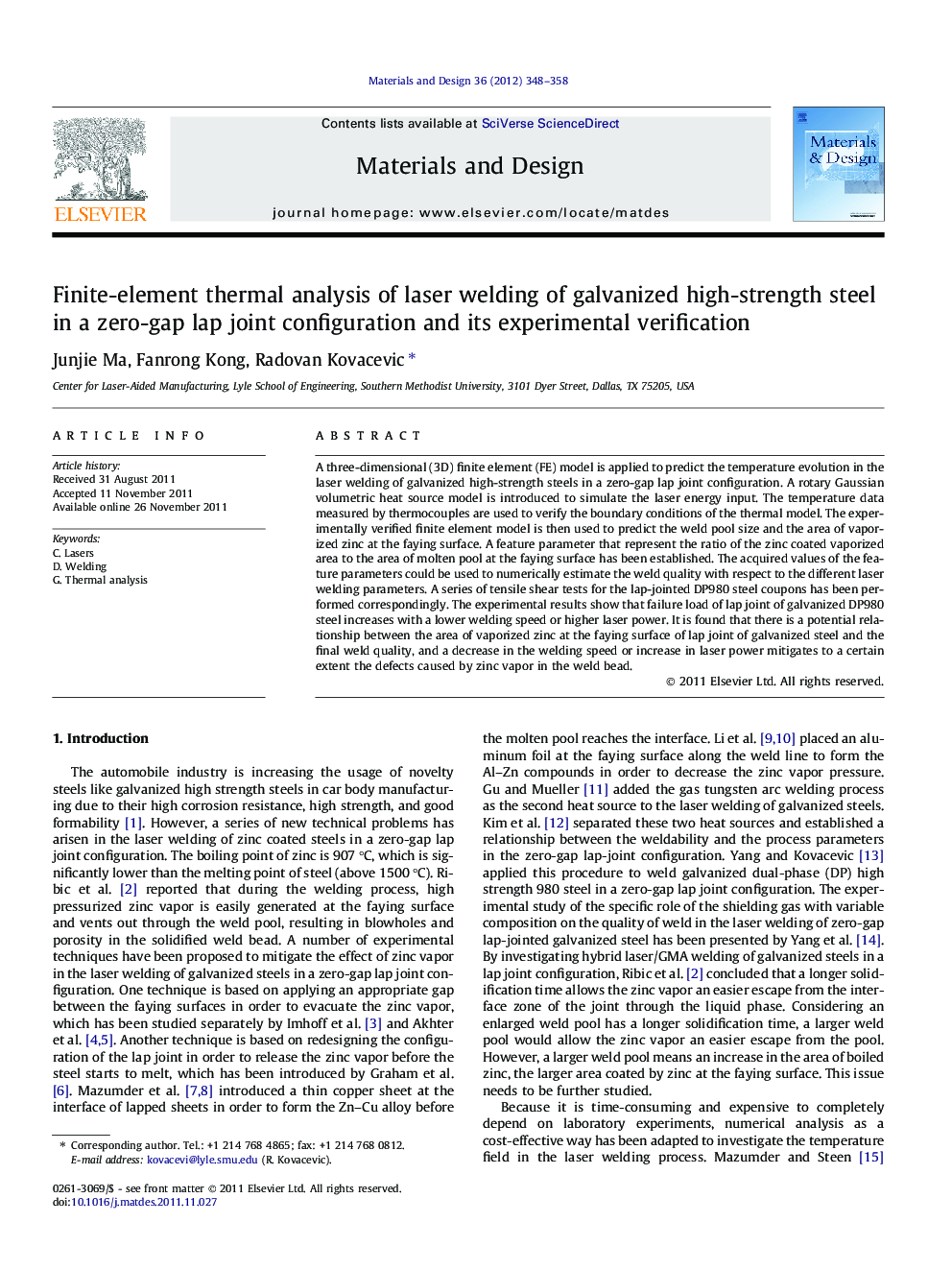| Article ID | Journal | Published Year | Pages | File Type |
|---|---|---|---|---|
| 830852 | Materials & Design (1980-2015) | 2012 | 11 Pages |
A three-dimensional (3D) finite element (FE) model is applied to predict the temperature evolution in the laser welding of galvanized high-strength steels in a zero-gap lap joint configuration. A rotary Gaussian volumetric heat source model is introduced to simulate the laser energy input. The temperature data measured by thermocouples are used to verify the boundary conditions of the thermal model. The experimentally verified finite element model is then used to predict the weld pool size and the area of vaporized zinc at the faying surface. A feature parameter that represent the ratio of the zinc coated vaporized area to the area of molten pool at the faying surface has been established. The acquired values of the feature parameters could be used to numerically estimate the weld quality with respect to the different laser welding parameters. A series of tensile shear tests for the lap-jointed DP980 steel coupons has been performed correspondingly. The experimental results show that failure load of lap joint of galvanized DP980 steel increases with a lower welding speed or higher laser power. It is found that there is a potential relationship between the area of vaporized zinc at the faying surface of lap joint of galvanized steel and the final weld quality, and a decrease in the welding speed or increase in laser power mitigates to a certain extent the defects caused by zinc vapor in the weld bead.
► An experimentally verified FE model is performed to predict the temperature field. ► The relationship between the weld quality and the vaporized zinc area is studied. ► A feature parameter is introduced to represent the weld quality. ► A lower welding speed or higher laser power can mitigate the weld defects.
